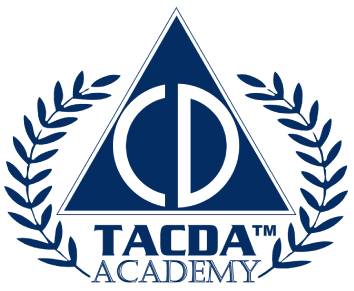Resources for What to do Before, During, and After Disasters

The TACDA Academy Lesson Manual is an emergency preparedness handbook prepared by The American Civil Defense Association and covers Civil Defense topics such as:
The TACDA Academy was written by a collaboration of civil defense experts, scholars, military personnel, and other professionals to teach in easy to understand formats the basics of survival. This 143 page manual is a comprehensive guide to civil defense concepts and teaches in depth how to survive emergencies and disasters. Click on the chapter links above to read about specific topics of civil defense, or click the red button below to purchase a copy of the full manual.
FEMA Comprehensive Preparedness Guides
FEMA Emergency Operation Plans – Houses of Worship and Schools
- Institutions of Higher Education (link not available)
Pre-Disaster Recovery Planning Guides
How To's:
Resource Links:
21st Century Homeland Defense and Civil Defense, An Analytical Study by Rick White Ph.D., Arthur J. Simental, M.S., John Holst, M.S. - Download ebook
American Preppers Network - https://www.facebook.com/groups/AmericanPreppersNetwork/
American Survivor - americansurvivor.org
Backdoor Survival. "Prepping with Optimism” - http://www.backdoorsurvival.com/
Civil Defense Perspectives - https://www.physiciansforcivildefense.org/category/civil-defense-perspectives/
Civil Defense Radio with Preston Schleinkofer- https://civildefenseradio.com/
Civil Defense Virginia - https://civildefenseva.org/
Crisis Preparedness - https://www.crisispreparedness.com/
Disaster News - https://x.com/Top_Disaster
Doctors for Disaster Preparedness - https://www.ddponline.org/
EMP Protection of Critical Civilian Infrastructure. Problems and Solutions by Dr. Vladimir Gurevich - Download ebook
Essential Guide to Flood Planning and Preparation - https://www.polygongroup.com/resources/flood-preparation-planning/
FDD’S Long War Journal - http://www.longwarjournal.org/
Federal Emergency Management Agency - https://www.fema.gov/
IAEA (International Atomic Energy Agency) for Nuclear safety and security - https://www.iaea.org
Medication Stability Beyond Shelf life - Download pdf
MetEd - Meteorology, weather forecasting, and related geoscience topics: https://www.meted.ucar.edu/about.php
Michael Mabee, author of The Civil Defense Book - https://michaelmabee.info/category/mikes-blog/
Minimizing Flood Damage - https://www.directline.com/home-cover/minimise-flood-damage
National Museum of Civil Defense - https://www.uscivildefense.org
Natural Hazards: A service of NASA’s Earth Observatory - http://naturalhazards.nasa.gov/ http://earthobservatory.nasa.gov/
Physicians for Civil Defense - https://www.physiciansforcivildefense.org/
Preserve The Harvest - https://extension.usu.edu/preserve-the-harvest/
Responding to an Active Shooter Crisis Situation (FBI) - https://www.fbi.gov/about/partnerships/office-of-partner-engagement/active-shooter-resources/responding-to-an-active-shooter-crisis-situation
Strive for More Preparedness - https://sfmpro.com/
Survival Sherpa: “Helping Each Other on the Climb to Self-Reliance and Preparedness” - https://survivalsherpa.wordpress.com/
The Daily Web Log for Prepared Individuals Living in Uncertain Times. – https://survivalblog.com/
The National Weather Service - https://weather.gov
The Provident Prepper: Common Sense Guide to Emergency Preparedness, Self-Reliance and Provident Living - http://theprovidentprepper.org/
The Weather Channel - https://weather.com/
Trusted News and Intelligence from Spec Ops Veterans - https://sofrep.com/
Waldo County Civil Defense Association - https://waldocivildefense.org/
We Protect People. Let us show you how. - https://escapethewolf.com/
We The Prepared: https://www.wetheprepared.com/
COVID-19 Information Links:
About the Coronavirus - https://www.youtube.com/watch?v=Xj1nUFFVK1E
Cases and Latest Updates - https://www.nih.gov/health-information/coronavirus
Centers for Disease Control and Prevention - https://www.cdc.gov/coronavirus/2019-ncov/index.html
FEMA - https://www.fema.gov/coronavirus
Frequently Asked Questions - https://www.cdc.gov/coronavirus/2019-ncov/faq.html
Homeland Security Coronavirus 2020 - https://www.dhs.gov/
National Institutes of Health - https://www.nih.gov/health-information/coronavirus
Prepare and Protect yourself - https://www.coronavirus.gov/
World Health Organization - https://www.who.int/emergencies/diseases/novel-coronavirus-2019
Nuclear Weapons Effects: Potassium Iodate (KIO₃) and Thyroid Protection
Following a nuclear detonation or radiological incident, radioactive iodine may be released into the environment. This isotope can be inhaled or ingested through contaminated air, food, or water and is readily absorbed by the thyroid gland, increasing the risk of long-term thyroid injury—especially in children, pregnant women, and young adults.
Potassium Iodate (KIO₃) is a stable iodine compound historically recommended in civil defense planning as a thyroid-blocking agent when taken only under official public health direction. When used at the appropriate time, stable iodine can help reduce the thyroid’s uptake of radioactive iodine.
Civil defense planning has long recognized that timing matters. After a nuclear or radiological emergency, public distribution of iodine countermeasures may be delayed or unavailable. For this reason, preparedness guidance has traditionally emphasized having appropriate supplies on hand in advance as part of a broader emergency readiness plan.
TACDA offers KIO₃ potassium iodate tablets as a preparedness resource for individuals and families planning responsibly for nuclear and radiological emergencies.
View KIO₃ Potassium Iodate Tablets in the TACDA Survival Store
Important: Potassium iodate should only be taken when instructed by public health authorities. It does not protect against external radiation or other radioactive materials and is only one component of comprehensive civil defense preparedness.
Downloads


